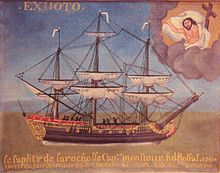
Saphir was a French slave ship that operated out of La Rochelle in France.

Saphir was a French slave ship that operated out of La Rochelle in France.
Saphir completed two slave voyages. The first in 1737 [1] and the second in 1741. [2] During the second voyage the wind did not blow leaving the crew and enslaved people stranded at sea without sufficient food and water. A revolt by the enslaved people erupted. [3]
Saphir was painted by an unknown artist in 1741, the painting is located in the Sailors Chapel of Saint Louis Cathedral in La Rochelle, France. It is a protected national object owned by the government of France. [3]
The painting is ex-voto and depicts the ship in control of the enslaved people who are offering gifts to Jesus, shown in the clouds and holding His Cross while raising a hand in blessing. [3]
A French documentary film about the ship was released in 2015. The film is called Sapphire of St. Louis and was directed by José Luis Guerín. [4]

La Rochelle is a city on the west coast of France and a seaport on the Bay of Biscay, a part of the Atlantic Ocean. It is the capital of the Charente-Maritime department. With 78,535 inhabitants in 2021, La Rochelle is the most populated commune in the department and ranks fourth in the Nouvelle-Aquitaine region after Bordeaux, the regional capital, Limoges and Poitiers.
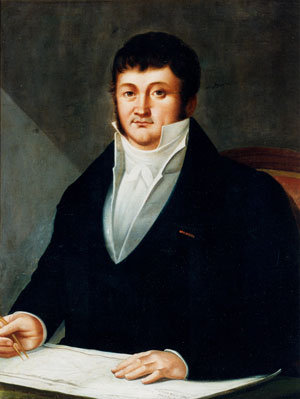
Robert Surcouf was a French privateer, businessman and slave trader who operated in the Indian Ocean from 1789 to 1808 during the French Revolutionary and Napoleonic Wars. Capturing over 40 prizes, he later amassed a large fortune from a variety of commercial activities, such as ship-owning, privateering, slave trading and owning land.
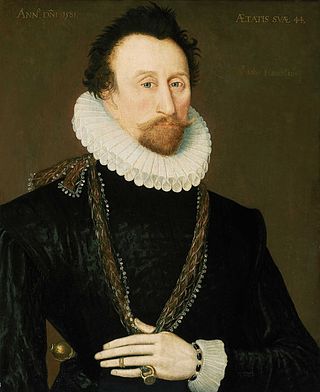
Admiral Sir John Hawkins was an English naval commander, naval administrator, privateer and slave trader.
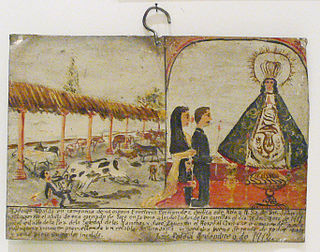
An ex-voto is a votive offering to a saint or a divinity, given in fulfillment of a vow or in gratitude or devotion. The term is usually restricted to Christian examples.

William Vernon, of Newport, Rhode Island, was a merchant in the Atlantic slave trade who played a leading role in the Continental Congress' maritime activities during the American Revolution. In 1774, Vernon was member of the committee of correspondence between Newport and Boston. As president of the Eastern Navy Board during the Revolution, he was responsible for building and outfitting the ships of the Continental Navy. William Vernon was one of the charter members of the Artillery Company of Newport, and is the namesake of the Vernon House.
Caleb B. Gardner of Newport, Rhode Island, was an American slave trader and slavery oligarch. He was the owner or part share owner of more than a dozen slave trade vessels. On many voyages, he was also the Captain of the vessel.
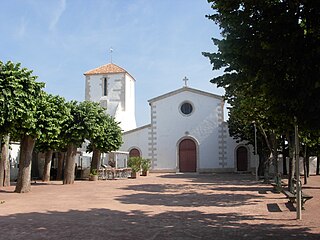
The Church of Saint Catherine is a parish church located in Loix, in the department of Charente-Maritime, the region of Nouvelle-Aquitaine and the diocese of La Rochelle and Saintes.
Michael Becher was a Bristol-born English slave trader and merchant. Becher was from an established Bristol commercial family, and he took over his father's slave trading firm
Parr was launched in 1797 at Liverpool as a slave ship in the triangular trade in enslaved people. She was lost in 1798 in an explosion on her first voyage.
Albion was launched at Liverpool in 1783. She made two voyages as a slave ship in the triangular trade in enslaved people before she was sold to a Bristol merchant. She then made two more enslaving voyages. In 1793 as she was on the homeward-bound leg of her fourth voyage a vessel ran into her and Albion's crew abandoned her. She then drifted to Salem, Massachusetts, where she was recovered. She was sold in Boston.

The Nantes slave trade resulted in the deportation, from the late 17th to the beginning of the 19th century, of more than 500,000 black African slaves into French ownership in the Americas, mainly in the Antilles. With 1,744 slave voyages, Nantes, France, was the principal French slave-trading port for the duration of this period. The slave trade was explicitly encouraged by the royal family and described by the church as an "ordinary occupation."
Niama was a Senegalese princess, who was enslaved, and whose liberation meant she became one of the first enslaved people to be freed on Réunion. She was also the mother of the astronomer, botanist and academic Jean-Baptiste Lislet Geoffroy.
Baron de Binder was launched in 1782. She made two voyages as a slave ship in the triangular trade in enslaved people. Then in 1793, she became the privateer Duguay-Trouin. After one cruise, the French Navy requisitioned her, and she served as a corvette for almost three years. The navy returned her to her owners, who sailed her as a privateer again. In 1798. the British Royal Navy captured her.
Several vessels have been named Venus for the planet Venus or the Roman goddess Venus:

Liverpool, a port city in north-west England, was involved in the transatlantic slave trade. The trade developed in the eighteenth century, as Liverpool slave traders were able to supply fabric from Manchester to the Caribbean islands at very competitive prices.

The Marie Séraphique was a late 18th-century slave ship that made six slave voyages out of Nantes, France. There are two illustrations of the ship that show how captives travelled, believed to have been painted by the captain and second lieutenant. There is a diagram showing densely-packed shackled slaves on the ship, and a painting showing slaves being sold aboard.

John Knight (1708–1774) was an English slave trader. He was responsible for at least 114 slave voyages in the period 1750–1775 and he transported over 26,000 Africans to the Americas. Knight traded enslaved Africans with the American politician and slave owner Henry Laurens.

Felix Doran (1708–1776) was an Irish slave trader. He was responsible for at least 69 slave voyages. Doran moved to Liverpool in the 1740s and operated out of the Port of Liverpool. His first slave-ship was called Lively and his final one was called Essex.

Thomas Foxcroft (1733–1809) was an English slave trader. He was responsible for at least 91 slave voyages in the years between 1759 and 1792. A contemporary set of financial accounts for one slave voyage by his slave-ship Bloom has been preserved. Captain Robert Bostock, Bloom's master, bought 349 enslaved people in Africa; 42 captives died and 307 captives were sold in the West Indies for £9858. The net profit on the voyage to the owners amounted to £8,123 7s 2d, or £26 9s 2d per captive sold.